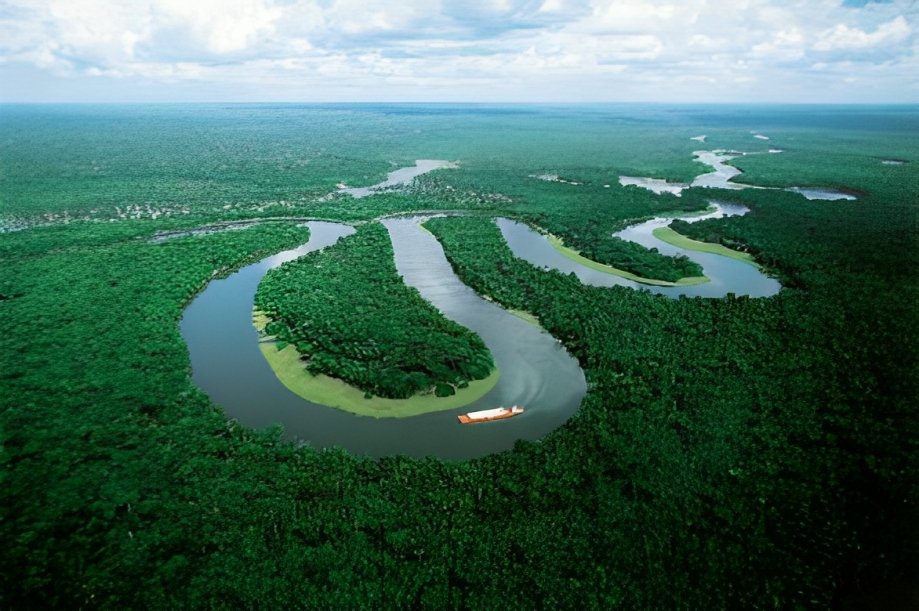30 animals of the Amazon rainforest that can be seen in their habitat
Amazon rainforest animals set the trend in today’s tourism across South America. Some mimic their surroundings, while others display an exuberant palette of bright colors, spots and patterns. The Amazon, the world’s largest rainforest, boasts a unique and unparalleled biodiversity.
With all kinds of visitors from around the world traveling to the Amazon with cameras properly set up to photograph these marvelous creatures. Here are 30 of the most common inhabitants you will find in this corner of the Amazon rainforest.
Mammals of the Amazon Rainforest
Some of the most incredible animals of the Amazon rainforest are the felines, monkeys and river monkeys. But that’s not all! The Amazon rainforest is home to many incredible mammals: at least 430 different species!
1. Jaguar

Cheetah spots are native to the plains of Africa just as jaguar spots are native to the jungle of South America. Many travelers visit this destination with great eagerness to see this iconic species of the Amazon rainforest. You have to go deep into the jungle to have the opportunity to see a jaguar as they do not commonly leave their natural habitat. The only lodge located within the vicinity of the Tambopata Reserve in the Peruvian Amazon, the Tambopata Research Center, offers a 35% chance of seeing a jaguar in its natural habitat regardless of the season.
2. Giant river otter
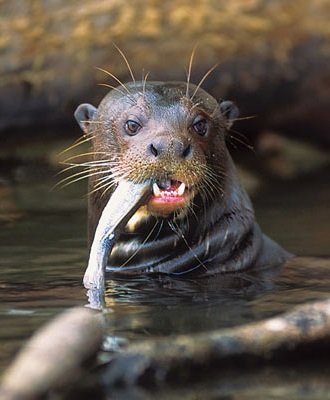
The giant river otters that inhabit the Amazon are the largest otter species in the world. Some reach up to 1.7 meters and swim through Amazonian rivers and lakes with their strong tails and webbed feet. Giant river otters are particularly communicative, as they have at least 22 different sounds in their vocabulary.
3. Red howler monkey
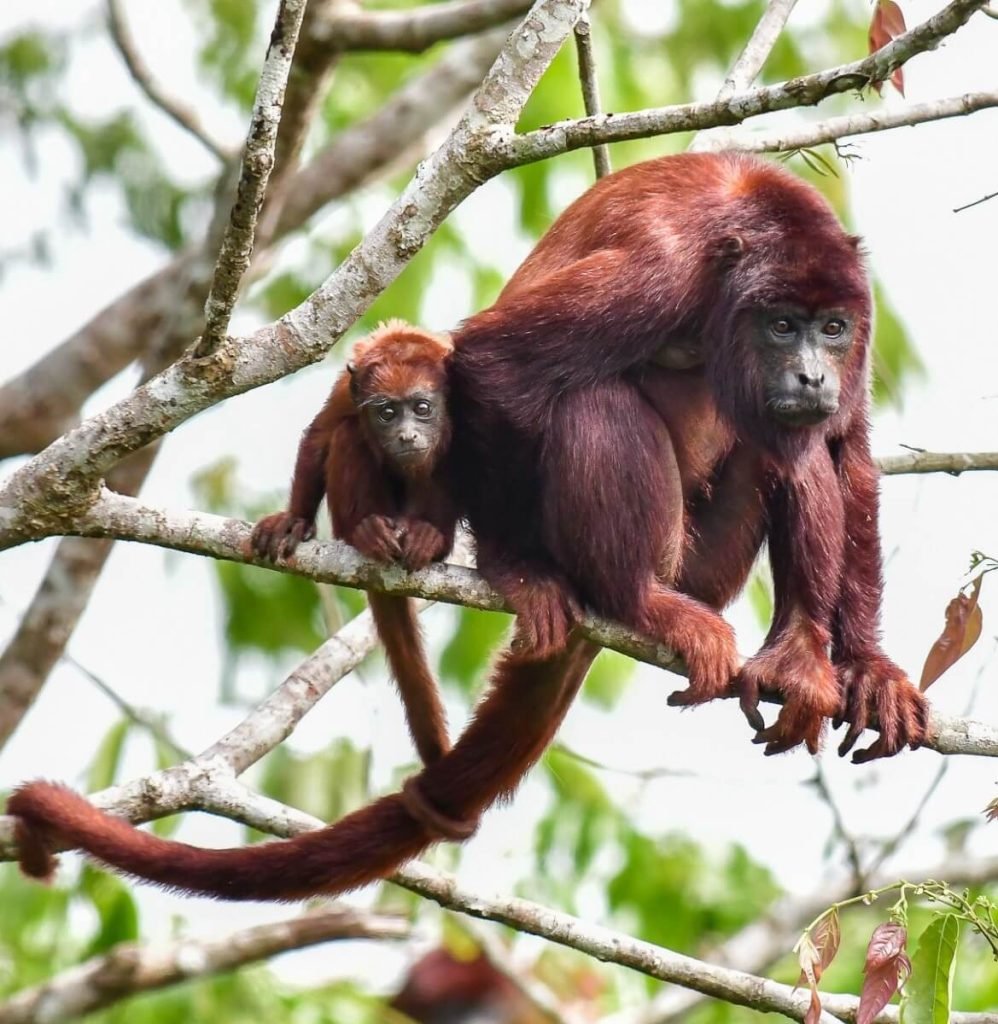
Red howler monkeys can be heard by most travelers visiting the Peruvian jungle. Their loud roars can be heard up to 5 kilometers away. There is about a 50% chance of seeing these monkeys from the best jungle lodges in Puerto Maldonado, with a greater chance the deeper you go into the jungle. Keep an eye on the treetops as these playful little friends are likely to pass by swinging overhead.
4. Capybaras or capybaras
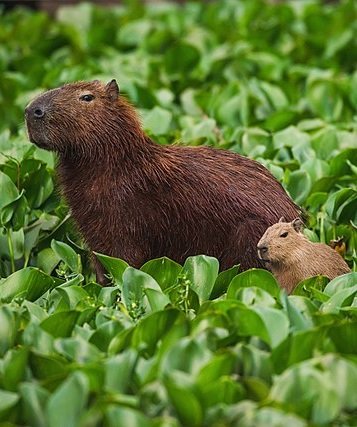
Capybaras, rather docile rodents, look like giant guinea pigs. They live in densely forested areas of South America, near bodies of fresh water. Capybaras are surprisingly good swimmers and can hold their breath for up to 5 minutes underwater. These jungle animals are the largest rodents in the world, averaging almost 1.2 meters long and 60 centimeters tall.
5. Black-capped Squirrel Monkey
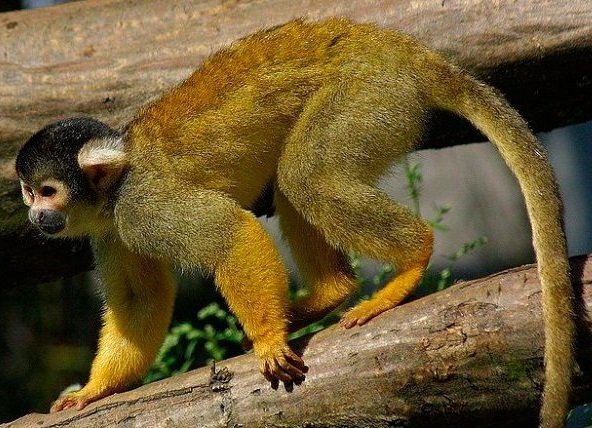
Black-capped squirrel monkeys normally inhabit the Peruvian, Brazilian and Bolivian Amazon. They live in female-dominated groups of about 40 to 75 monkeys. Unlike many other monkeys that use their tails to climb, these squirrel monkeys often use their tails to maintain their balance in trees.
6. Sloth
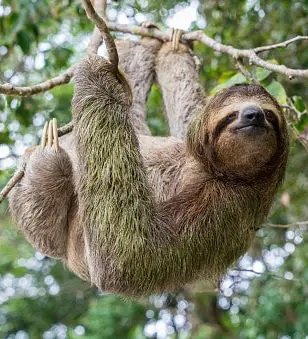
You can find both two-toed and three-toed sloths in the Amazon. If you are very lucky, there is a small chance of seeing them in the wild during excursions at our favorite jungle lodges in Puerto Maldonado.
7. Collared anteater
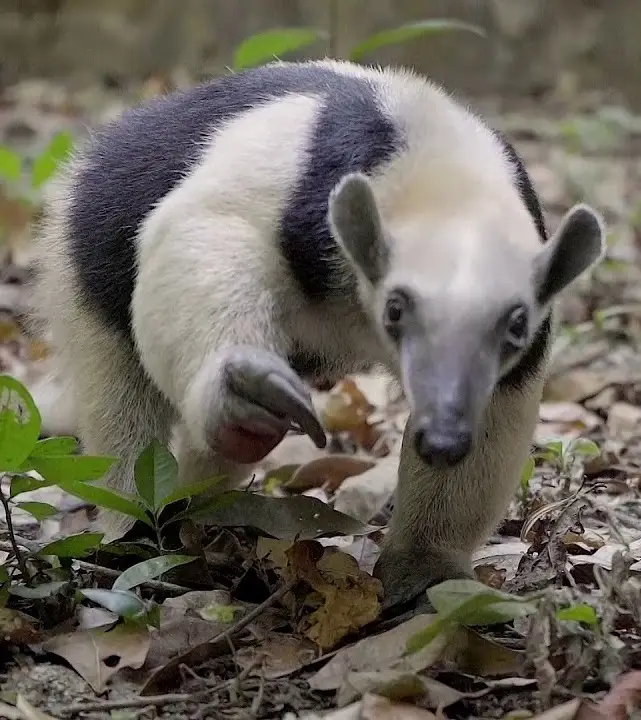
Although several species of anteaters live in the Americas, the collared anteater is exclusive to South America. Much smaller than giant anteaters, they are capable of climbing trees in search of ants, termites or other food. With tongues up to 40 centimeters long, these anteaters can easily catch insects that make up a large part of their diet.
8. Pink river dolphin
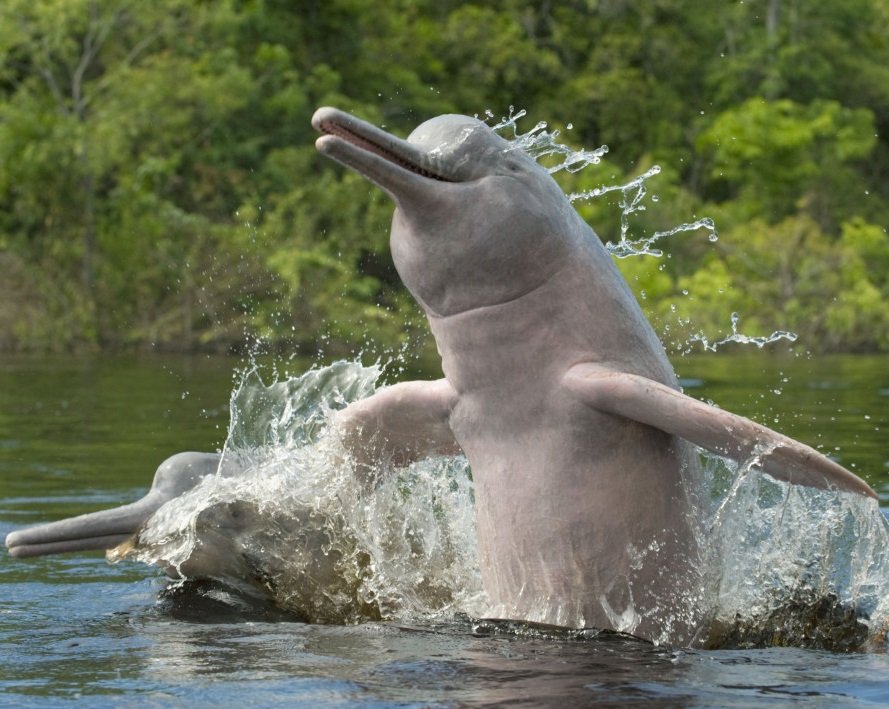
Pink river dolphins live in the Amazon River and its tributaries. While their calves are dark gray in color, adult dolphins acquire a light pink hue as they grow. Native tribes around the Amazon have several legends dedicated to pink dolphins. One of the best known says that the dolphins turn into handsome young men at night and head for the shores to seduce young girls who happen to be there. To see these incredible dolphins for yourself, consider staying at an Iquitos jungle lodge or taking a luxury river cruise along the Tambopata River.
9. Puma
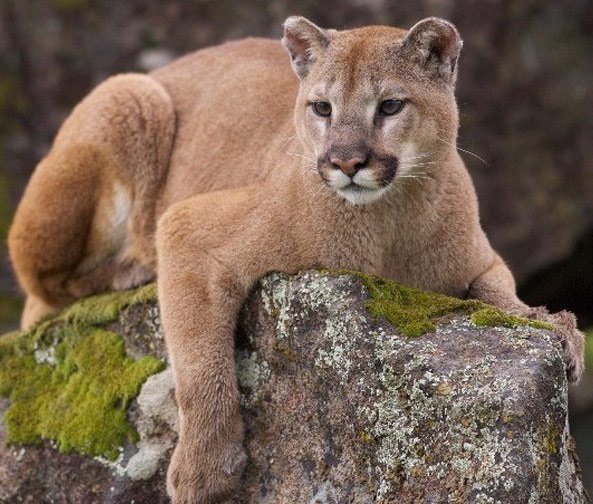
Here is a true legend that lives in the jungle: the puma. Of slender build and carnivorous habits, “ferocious” is an appropriate adjective to characterize these rainforest felines. Consider yourself very, very lucky if you see a puma in the wild. Even the locals themselves have not seen one in over 20 years in the Amazon.
10. Bearded emperor marmoset
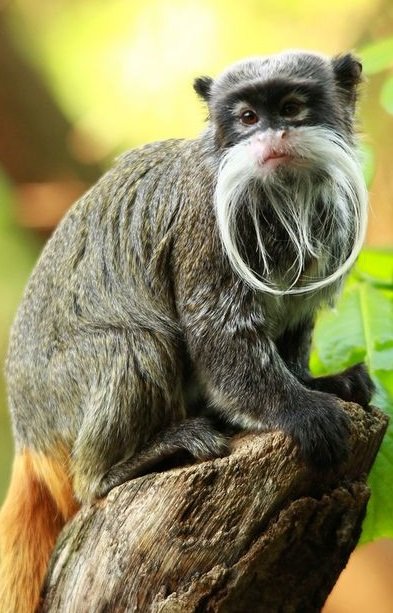
This peculiar species with its distinctive white moustache and beard lives with a small, extended family of between 4 and 15 members. The bearded emperor tamarin only sees the world in two colors, which helps it detect predators, even those with the best camouflage. Some females see a third color, which helps them detect the ripest fruits and are decisive in deciding the diet for the herd.
11 Amazonian tapir
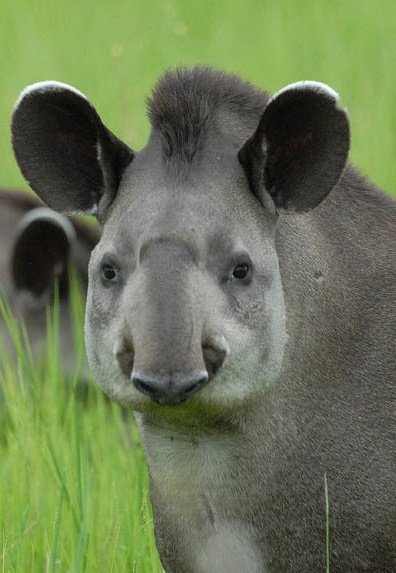
At first glance, one might think that tapirs are a species of wild pigs or that they are related to anteaters. In reality, tapirs are more closely related to horses and rhinos! Amazonian tapir calves are usually born with white stripes and spots that fade over time. They are great swimmers and often run into rivers to escape predators.
Birds of the Amazon Rainforest
These seven unique species are just an iconic small percentage of the 1,300 bird species that inhabit the length and breadth of the Amazon (making it the perfect place for birding). Feathers are all the rage, whether blending in with nature or standing out with vivid, bright colors, these animals of the Amazon rainforest are quite the spectacle.
12. Macaw
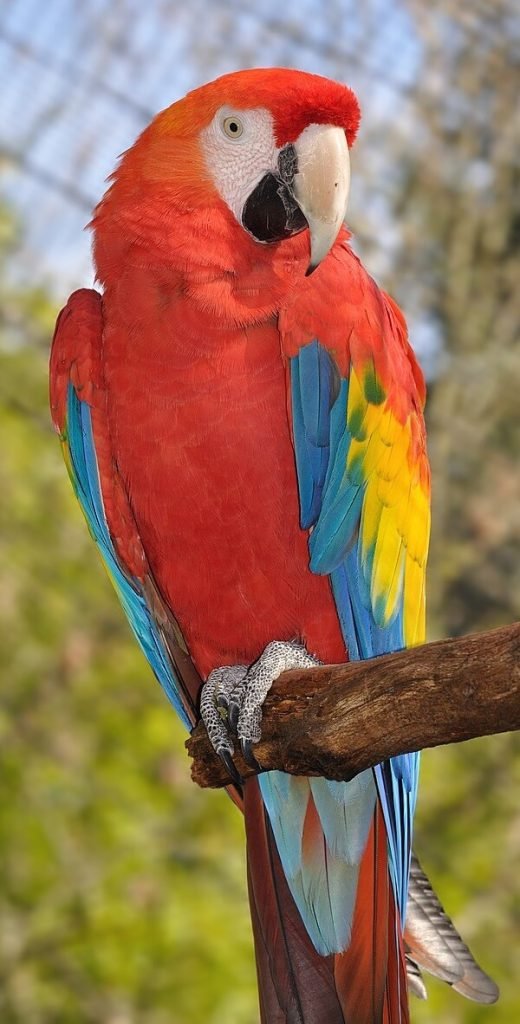
Macaw feathers come in all colors: red, yellow, green and blue are the most common colors throughout the Tambopata area. The red macaw is the best known, with its red, yellow and blue feathers. It is common for macaws to gather at the clay licks in search of salt and clay to supplement their diet. This gives many visitors to Puerto Maldonado the opportunity to see these majestic birds in the wild in a spectacle of colors in the skies.
13. Harpy Eagle
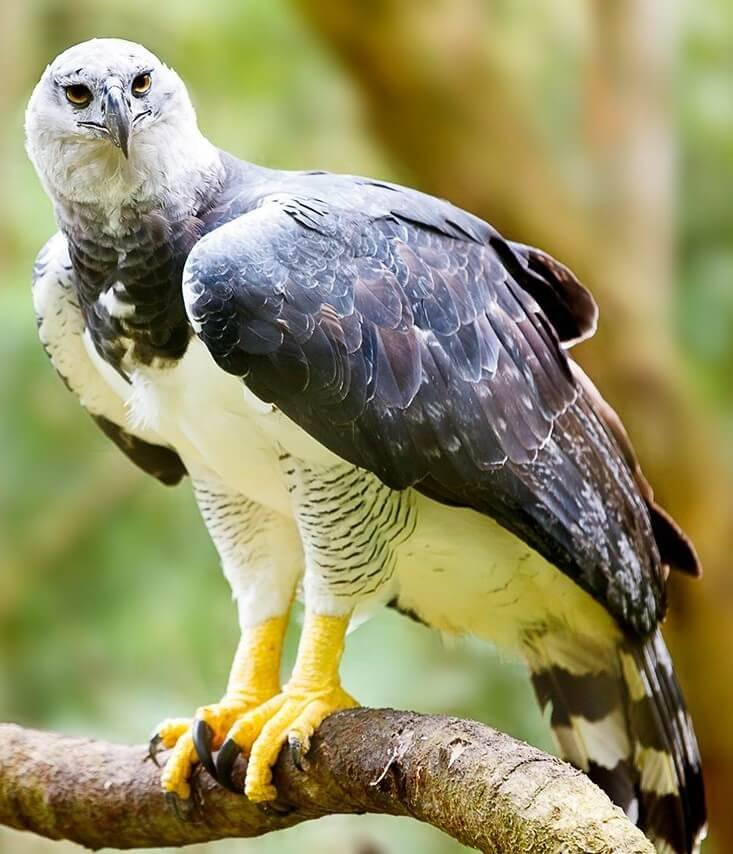
The precise eyes and sharp beak are key features of the harpy eagle. The harpy eagle is one of the top predators of the rainforest, soaring through the skies of the Amazon and is a phenomenal sight to see soaring above the treetops. Harpy eagles have a gray head, white belly and an intricate pattern of white, gray and black feathers on the wings.
14. Collared cotinga
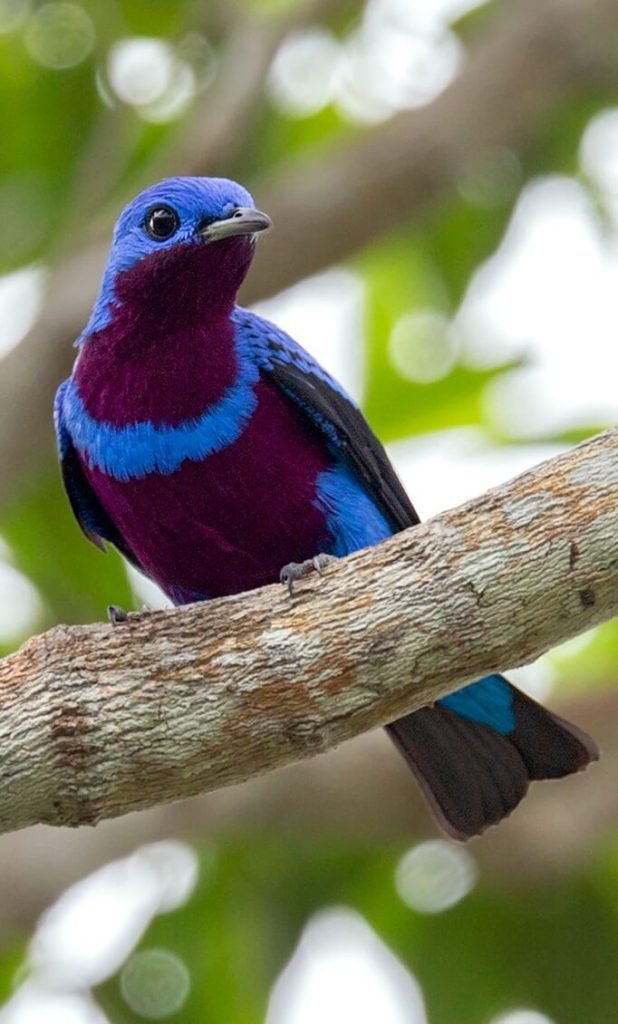
Male cotingas are characterized by the vibrant turquoise feathers that cover their body, with a patch of dark pink feathers on the throat, fantastic birds to watch. One of the animals of the Amazon rainforest, it lives high in the treetops and unlike the other birds on this list, it does not have the ability to make sounds.
15. Royal flycatcher
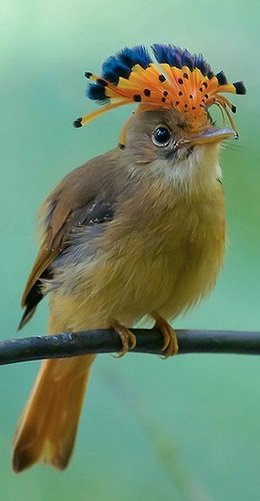
Although the body of this bird is quite plain, it has an extremely beautiful crest that it displays when it feels threatened or is trying to attract a mate. The bright crest feathers range from yellow to red and have purplish-blue tips and spots.
16. Potoo bird
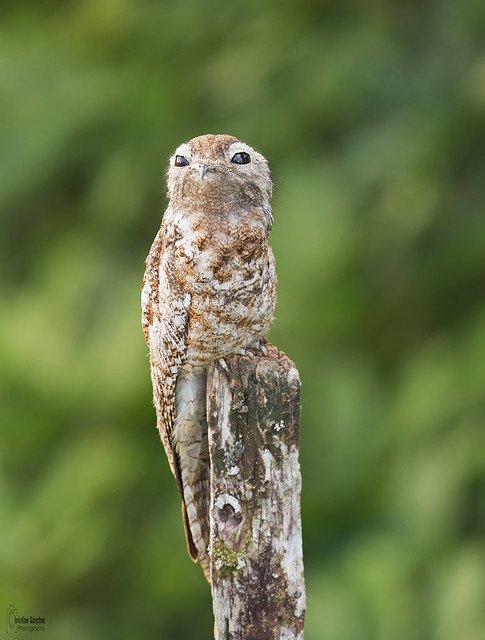
Potoo birds offer a new form of camouflage. These jungle birds blend in cleverly as an extension of bark or as a broken log. As nocturnal inhabitants of the jungle, they are very active at night. They also emit eerie vocalizations that travel long distances to alert others to their presence.
17. Toucan
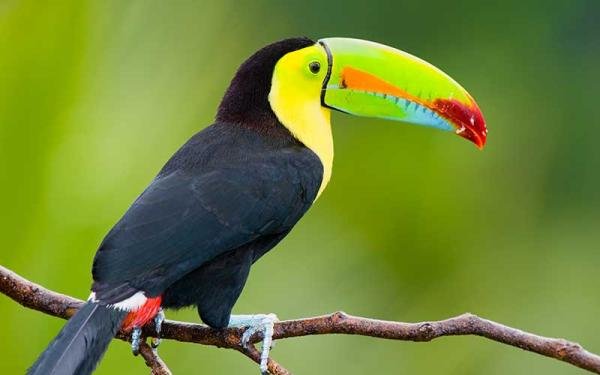
The large and often colorful beaks are the most distinctive characteristics of toucans. The Tambopata region of Peru is home to many toucan species, such as the yellow-crested toucan and the emerald green-feathered toucan.
18. Paradise Tanager
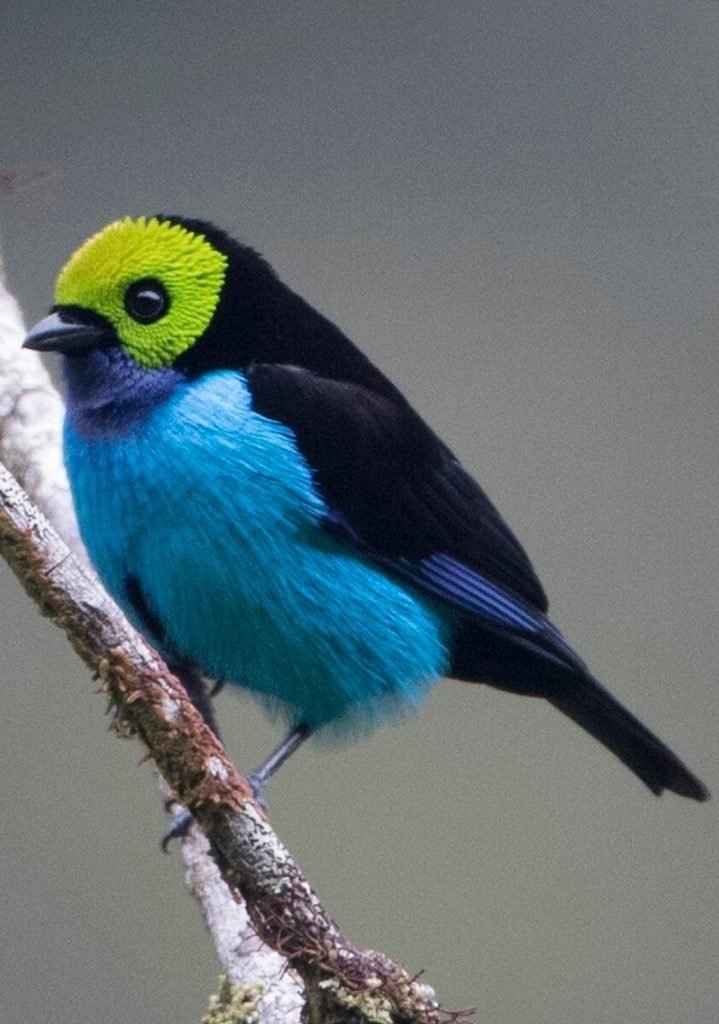
This multicolored songbird is common in the Amazon. With a bright green head and sky blue belly, they usually stand out from their surroundings. This bird nests high in the treetops, away from predators that might go after their eggs.
Reptiles and Amphibians of the Amazon Rainforest
More than 400 species of amphibians and more than 375 species of reptiles live in the Amazon. Below are some of the most famous, important and unique reptiles and amphibians you will find in the Amazon rainforest.
19. Poison Frog
Some of the most colorful amphibians in the rainforest are the poison dart frogs. These small venomous jungle creatures often have brightly colored patterns on their skin. Composed of red, blue, yellow and intermediate shades, their bright colors are a key defense mechanism to ward off predators.
20. Side-necked Turtle
It is common for different species of butterflies to drink from the tears of the side-necked turtle, a natural phenomenon in the Amazon. Many plant-eating inhabitants of the Amazon do not get enough salt from their diet. They have therefore found creative solutions, such as drinking turtle tears, to increase their salt intake with elements from their environment.
21. Black caiman
The largest predator in the Amazon ecosystem is the black caiman. As its name indicates, this reptile has dark scales that help it blend in with its surroundings and camouflage itself to hunt more effectively. Most of the time, only its eyes can be seen lurking above the water.
Scientists have discovered fossils of an extinct giant alligator within the territory normally inhabited by the black alligator, this fossil reached more than 12 meters. However, this crocodile is currently only about 4.5 meters long, almost as long as its relative the American alligator.
22. Bicolored tree frog
The eyes of this frog are undoubtedly the most notable feature of its species. These giant leaf frogs are commonly found throughout the Amazon. These frogs have bright green backs with cream colored bellies. The frogs spend most of their time in trees rather than their relatives that commonly inhabit the forest floor. They swing through the trees like monkeys, which has given them an alternative name: giant monkey frog.
23. Green anaconda
Green anacondas are the heaviest and second longest snakes among their relatives around the world. These aquatic boas are rather clumsy on land, but more cunning in the swamps, marshes and streams in which they hunt. With their eyes and nose on the top of their head, they can hide most of their body underwater while foraging for food.
Insects of the Amazon Rainforest
The Amazon Rainforest is home to an incredible variety of insects – over 90% of all animals in the Amazon rainforest are insects! Researchers and scientists discover thousands of new insect species every year. Because of this, it is difficult to know exactly how many insects may inhabit the rainforest. The following are some unique insects that live in the Amazon rainforest.
24. Leaf Cutter Ant
Leafcutter ants live in large, complex colonies, with each ant playing a specific role based on its size and body characteristics. Leafcutter ants eat more vegetation than any other rainforest creature. In addition to vegetation, these ants grow a fungus underground that makes poisonous plants edible for their species.
25. Pink-toed tarantulas
The pink-toed tarantula has a solid black body, but shows some distinctive personality in its legs. They are quite docile tarantulas, with pink tips on each of their eight legs. Unlike most tarantulas, they are active during the day. In addition, the pink toes help them stand out from their surroundings, giving travelers a better chance of seeing them during their visit.
27. Blue morpho butterfly
The Amazon is home to at least 7,000 species of butterflies, 35% of the world’s known species. One of the most striking butterflies in the rainforest is the blue morpho. With their bright blue wings, it is impossible to miss them fluttering through the jungle.
28. Urodid moth cocoon
The intricate design of this fancifully shaped cocoon was painstakingly woven by a urodid moth. This cocoon has an open structure, allowing air to flow over the pupa, preventing mold and fungal growth. The pupa will remain in its cocoon until it is fully grown and then make its entrance into the jungle through the tubular escape hatch at the bottom.
This amazing translucent-winged butterfly lives in the deep, well-shaded parts of the rainforest. It earned its name because of the amber accents on its wings and for being semi-transparent, like a ghost or specter.
29. Brazilian wandering spider
This spider has the most toxic venom in the world. The Brazilian wandering spider lives not only in the Brazilian Amazon, but also in parts of South America. This spider earned its name because it actively searches for prey. It is a wanderer, unlike other spiders that build and wait in a web. This long-legged spider has a brown body and red fangs and is constantly searching for prey.
30. Scorpions in the Amazon
Although scorpions are often thought of as living in the desert, the Amazon rainforest is also home to several species. After seeing the above photos of Amazon rainforest animals, you probably thought you had seen it all. You probably didn’t know that scorpions glow under black light. Under the beam of an ultraviolet light, scorpions glow neon blue, illuminating like beacons in the night.
In the Amazon there is everything: species that look cute and furry to real weirdos with extravagant colors and unique in their form. The Amazon rainforest is undoubtedly a melting pot of unique animals in this remote part of the world. Want to see these amazing Amazon rainforest animals for yourself? Don’t hesitate any longer and start planning your trip to the Tambopata Amazon rainforest with an experienced agency.

